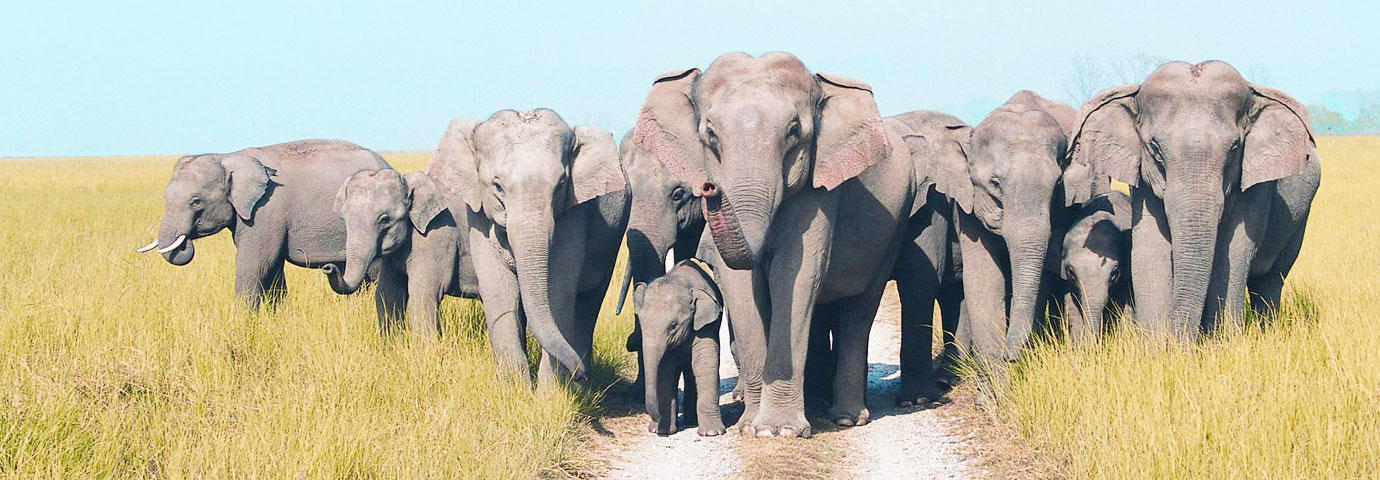Fast Facts
|
Area
|
820.42 sq km
|
|
Languages Spoken
|
Hindi, Garhwali, English
|
|
Altitude |
300-1,345 m above sea level |
|
Minimum Temperature |
13.1°C |
|
Maximum Temperature |
38.9°C |
|
Best Time to Visit |
October to March |
The Rajaji National Park is named after the first Indian Governor General of India and well-known freedom fighter, C. Rajagopalachari or Rajaji, as he was popularly known. The park was established in 1983 after amalgamating three wildlife sanctuaries, namely, Rajaji, Motichur, and Chilla in the southern foothills of the Himalayas. Today, the park boasts of the highest concentration of wild elephants in the entire Uttaranchal.
As the park runs along several major cities of Uttaranchal like Dehradun, Haridwar, and Mussoorie, the number of visitors to the park has always been high. There are excellent lodging, eating, and access facilities. The park also offers some breathtaking views of Himalayan mountain range and an option to move into other wildlife sanctuaries of the region.
Location
Rajaji National Park is located in the Western Himalayan state of Uttaranchal. The park extends from latitudes 29°52'-30°15' N to longitude 77°55'-78°19' E.
Best Time To Visit
The climate of the region is tropical with hot summers and cold winters. In summers (mid-April to July), the maximum temperature reaches a high of around 40°C and relative humidity is at its peak at hovering around 90%. Winters (October to February) can be chilly as the temperature during the night can dip below 5°C on a normal day. It is essential to carry warm clothes if you visit the park in the winters.
Tourists Attractions
The park is rich in floral species and its vegetation consists of plants, under-wood, and undergrowth species. The main species of plants in the park are the sal (Shorea robusta), baki (Anogeissue latifolia), sain (Terminalia tomentosa), haldu (Adina cordifolia), bachera (Terminalia ballerica), jhingan (Lannea coromandelica), kharpat (Garuga pinnata), phauri (Lagerstroemia parviflora), bula (Kydia calycina), badal (Stereospermum chelonoides), tun (Cadrela tonna), gutel (Trewia nudiflora), gular (Ficus glomerata), etc.
The under-wood is light and often absent. It consists of rohini (Liollotus philippinensis), amaltas (Cassia fistula), sandan (Ougeinia oojeinensis), pipal (Bauhienia lazan), mahal (Pyrus pashla), chamaror (Ehretia laevis), aonia (Emblica officinalis), kachnar (Bauhienia variegata), ber (Ziziphus mauritiana), chilla (Casearia tomentosa), bel (Aegle marmelos), etc.
The undergrowth consists of karaunda (Carissa opaca), gandhala (Murraya koenigil), marorphali (Helicteres isora), etc. While the grasses include gorla (Cyryspogon fuivus), kummeeria (Heteropogon contortus), etc.
Rajaji National Park is also rich in faunal wealth. The main groups of animals are mammals, birds, reptiles (snakes and lizards), amphibians (frogs and toads) and fishes, and scorpions, centipedes, odonata (dragon and damselflies), hymenoptera (wasps, bees, etc.), isoptera (termites) and lepidoptera, which comprises more than 60 species. India's national bird peacock is found here in abundance.
In all, the entire park has around 49 species of mammals, 315 species of birds, 49 species of reptiles, 10 species of amphibians, and 49 of fish fauna.
Places Around Rajaji
Haridwar
Haridwar or 'the Gateway to the Gods' is one of the seven holiest places according to Hindu mythology, as the Gods are believed to have left their footprints in Haridwar. The main attractions in the city are Har-Ki-Pauri, Chandi Devi, Bilwa Parvat, Vaishno Devi temple, Gurukul Kangadi University, Bharat Mata Temple, Maya Devi Temple, Bhimgoda, and Shanti Kunj.
Rishikesh
Crowded with sadhus with long matted hair and pilgrims from all over the globe, Rishikesh is the birthplace of yoga and holiest of Hindu pilgrimage sites. The main attractions here are Triveni Ghat, Bharat Mandir, Chandreshwar temple, Swarg Ashram, Lakshman Jhula, Kailashananda Ashram, and Jaisamand Lake.
Dehradun
Dehradun is one of the oldest cities in India and the capital of the newly formed state of Uttaranchal. The major tourist attractions here are Tapkeshwar, Robbers' Cave, Tapovan, Malsi Deer Park, Forest Research Institute, and Kalsi. A number of important institutions are located in Dehradun.
Mussoorie
Mussoorie, like other hill resorts in India, came into existence in the 1820s or thereabouts, when the families of British officials began making for the hills in order to escape the scorching heat of the plains. The main attractions in and around the city are the Mall, Lal Bahadur Shastri National Academy of Administration, Wynberg Allen School, Gun Hill, Surkhanda Devi Temple, Nag Tibba, Dhanaulti, Chamba, Camel's Back Road, Kempty Fall, Hawa Ghar, and Colonel George Everest Estate.
How To Reach
By Rail & Road - The park is easily accessible from Haridwar, Dehradun, Rishikesh, and Mussoorie. Dehradun (where the headquarter of the park is located) can be reached from most of the important places in India by rail or road.
By Air - The city is also on the air network and connected to Delhi. The park has seven entry points accessible from all of the four cities mentioned above by road.


